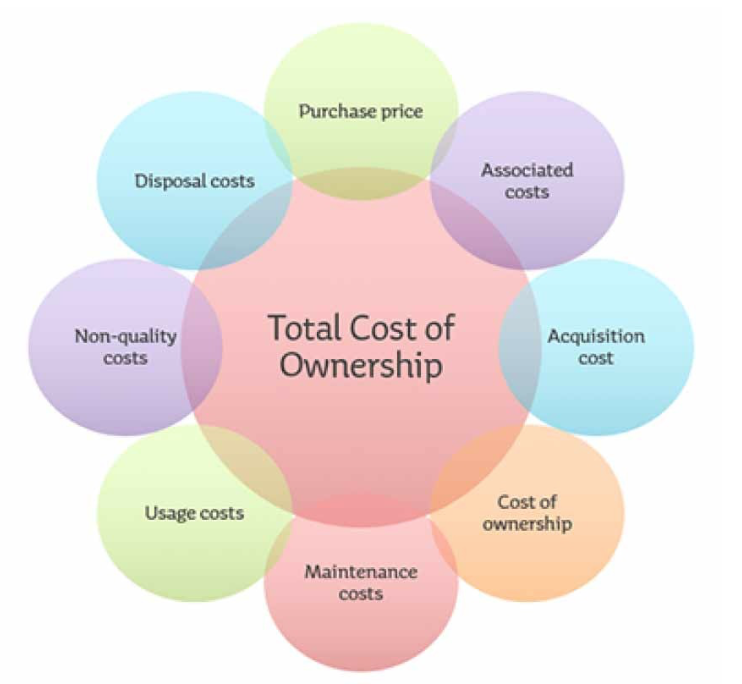Modern intranets are powerful tools and will benefit your organisation in numerous ways – from increasing employee productivity to improving internal communication, knowledge sharing, employee engagement, and much more besides. But how much does a company intranet cost that will unleash all these fantastic benefits for your business?
There isn’t a straightforward answer to this question because every organisation is unique and has specific needs. What form your intranet takes will depend on the size of your organisation, the features and functionalities you need from the intranet, and what other software solutions the intranet needs to integrate with – all of which will affect the final cost.
Whatever the capabilities of your intranet, however, they are undoubtedly a good investment for the majority of companies. Without an efficient private intranet, operations slow down, and employee engagement decreases.
Investing in a cost effective intranet solution has several benefits, which are:
- Increased flexibility that allows employees to work with their preferred schedules, remotely or on-premises.
- Increased productivity due to automation of repetitive tasks.
- Reduced costs of maintaining on-premises IT infrastructure. When companies opt for a cloud intranet, the costs of web development, platform maintenance, and hardware depreciation all go down.
- Knowledge management is up-to-date, and information is easily accessible. Thanks to cloud storage services, automatic backups, and more robust security, employees can access information relevant to their work much more readily and from anywhere.
How much does Intranet Software cost?
In a nutshell, it varies. What’s essential is that you acknowledge the Total Cost of Ownership (TCO) when comparing different intranet solutions available in the market and their associated costs. This will give you a figure that combines the purchase cost of your IT assets plus the cost of operations and maintenance.

(Image source: manutan.com)
A comprehensive intranet budget includes the following TCO components:
1. Technical support costs
For an intranet to deliver optimum value, it needs to have sufficient support available in real-time. In addition, users need to quickly troubleshoot technical issues and have them resolved without long waiting periods. If your enterprise does not have a support specialist, you can outsource this to companies that specialise in support.
2. Infrastructure cost
An intranet network requires servers and routers to operate. The number of employees determines the cost of infrastructure in the organisation, the cloud setup model (private, public, or hybrid cloud), and the maintenance required.
Intranets hosted on cloud services cost less than those hosted via on-premise servers. However, some companies prefer private servers due to data security concerns.
3. Subscription costs
If your company prefers to host its IT infrastructure on cloud-based platforms, subscription fees make up the bulk of your IT budget. The subscription fee depends on the type of cloud service package you subscribed to, the duration of the contract, and how much your business scales after you engaged the cloud service provider.
4. Setup costs
The intranet setup stage is crucial for a successful installation. Business goals and your customer strategy determine the number of features. For example, businesses requiring specialised resources may incur bespoke intranet development costs than enterprises that need networking capabilities without much customisation.
5. User training and onboarding costs
Regular training on intranet features ensures your employees utilise the platform in its entirety. With every new software addition, your IT team should train and onboard staff members to reduce the number of user tickets raised for repetitive queries. In addition, training ensures a higher return on investment because employees improve their work functions and reduce time spent resolving issues.

Frequent training sessions are an important part of ongoing intranet management
6. Company size
Many intranet solutions offer services on a price per user basis. A larger organisation will naturally incur overall higher intranet costs even though the price per user is lower.
It is important to check whether your intranet vendor provides volume discounts, together with the costs for any add ons per user, in order to provide an accurate reflection of the true cost of your intranet platform.
How to develop a company intranet strategy
To get the most value from your intranet software, the project manager, in consultation with all stakeholders, needs to create a comprehensive strategy, the scope of which includes implementing the intranet project, post-installation support, and ongoing costs of maintenance required.
A detailed approach helps you to control costs and derive the utmost value from your intranet solutions. These are the elements to consider:
- Business objectives: Your intranet site proposal should align with your business goals to help you create a convincing business case to present to key stakeholders. Ideally, the intranet package should contain features that help you achieve business objectives more efficiently and at a lower cost.
- Installation strategy: Installing a new intranet requires a well-defined execution plan that does not disrupt business operations. You should also have a recovery plan and alternatives if there’s a system failure during the installation process.
- Reporting: After installation, determine the frequency of report generation and the kind of insights required to make business decisions. Regular monitoring, evaluation, and reporting ensure consistent improvements to your platform and derive optimum value.
- Responsibilities: Maintaining a successful intranet is labour-intensive and requires dedicated staff to keep it running smoothly. Assign IT personnel to critical functions and outsource any other maintenance role to a service provider.
Technical elements to consider while acquiring an intranet solution
These are the key components to consider while selecting an intranet platform:
1. Cloud-hosting or on-premises hosting
With the growth in cloud services, companies are moving their IT infrastructure to cloud platforms to take advantage of the wide range of services. Hosting your intranet platform on the cloud saves you time and resources which you could have spent undertaking on premise maintenance and support.

Cloud vs on-premise hosting – consider which option is best for your organisation
2. Customisation or out-of-the-box intranet solution
An out-of-the-box intranet software solution works for companies that don’t need customised intranet solutions and are comfortable with what the service offers, without further customisation. For other businesses, they might need bespoke products due to the size of their organisation, security concerns, and potential scalability.
3. Upgrades and technical support
Any employee intranet portal requires regular upgrades to stay relevant, improve on security, and increase efficiency. Your intranet provider should notify you of system upgrades well before the actual process, so you can plan for business continuity. Throughout the upgrade process and normal business operations, technical support should be on call.

![[FREE GUIDE] SaaS and In-House Intranet Hosting: What You Need To Know](https://no-cache.hubspot.com/cta/default/5025095/34b9436f-293e-4e8d-a714-d9458d273f8c.png)




